
In late 2018, a relative of this writer was the lead taster of a focus group assembled to test-taste a rum from an Italian company which sought to re-vitalize and even supplant the Velier Demeraras by issuing a rum of their own. Your indolent-but-intrepid reporter has managed to obtain a copy of the official report of Ruminsky Van Drunkenberg, who is, as is widely known (and reported in last year’s authoritative biography of the Heisenberg Distillery) a man with pure 51 year old pot still hooch in his bloodstream, and whose wildly inconsistent analytical powers (depending on his level of alcoholic intake at any given moment) can therefore not be doubted. The report is below.
To: Report to Pietro Caputo, Managing Director, Moustache Spirits, Padua, Italy
From: Investigative Committee representing the focus group
April 1st, 2019
Dear Sir
We are pleased to submit our detailed report on the Alban 1986 28 Year Old rum, using as our starting point the company’s website, its marketing materials, and private discussions with Pietro Caputo, Philippe Entiope, Thomas C. and Roger Caroni.
The background narrative, laboratory analyses and blind tasting test results by lesser mortals is attached, but we would like to summarize it with the abstract that follows.
Historical and production background
The rum in question was bottled through the reluctant efforts of the local distillery, who were so loath to lend any assistance to a company whose leftover still wash exceeded their own ultra-super-premium rums without even trying, that they rather resentfully provided some old Velier labels they had kicking around, and escorted Mr. Alban and Moustache Spirits’s Signor Caputo off their premises with gentle words like “Ker yo’ tail from ‘ere!” and “Don’ ever come back!” We are convinced that it is just low-class jealously and envy which lies behind such crude and unbecoming attempts to derail what is already known to be the best rum of its kind in the world.
The Alban 1986, as it is called, is named after the family whose rum-making history stretches back into the 1800s, and was distilled in that year on what has become a legend in upscale ultra-refined rum circles, the “Golden Fruit Still” double retort wooden pot still, owned by the Alban family of Fort Wellington, Berbice, Guyana, right behind the police station at Weldaad. Mr. Stiller Alban, known as “Bathtub” is a constable there and is the Master Distiller in his spare time.
The Albans are distantly related to the Van Rumski Zum Smirnoffs and the Van Drunkenbergs (see attached family tree) who were instrumental in making the Heisenberg mark – there has been discord between the branches of the family for generations, ever since Stiller Alban’s grandfather Grogger (known as ‘Suck-teet’) reputedly stole the still from the Heisenberg plantation nearly a century ago; the issue remains unconfirmed since none of the family members can speak coherently about any other without spitting, cursing and lapsing into objurgatory creole. While Mr. Alban could not be reached for comment, his younger twin brothers Hooter and Shooter (respectively known in the area as “Dopey” and “Sleepy” Alban) told this Committee that the distillate was the best variety “Roraima Blue Platinum” cane grown in the area. This varietal apparently is not found anywhere else on earth, and is so rich in sucrose that locals just cut it into pieces and dunk it into their coffee. Kew Gardens in London have tried to get a sample for hundreds of years, but it remains fiercely guarded by the Albans, on whose little plantation alone it is found. It is considered the purest and most distinctive iteration of terroire and parcellaire on the planet.
Messrs. Hooter and Shooter Alban confirmed that the wooden double retort pot still (of their own family’s design and manufacture) remained operational, and fiercely denied any suggestion that it had once belonged to, or was made by, either Tipple Heisen or Chugger Van Drunkenberg. “We great-granfadder Puante “Stink Bukta*” d’Alban and he son Banban mek dat ting,” they both said indignantly when the subject was brought up. “He cut de greenheart and wallaba wood heself, he forge de rivets and de condensing coil and put de whole ting togedder wit Banban. Dem rascally tief-man over in Enmore ain’ got de sense God give a three-day-old-dead fish, but dem plenty jealous,” they said.
Grogger Alban reportedly laid a few barrels away in 1986 to commemorate the birth of the twins, and bottled the casks when they finally learnt to write their own names the same way twice (in 2015). However, for all its age, the rum is clearly modest in its aims, as, for one thing, it does not wish to dethrone the G&M Long Pond 1941 58 YO as the oldest rum ever made, being issued at a mere 28 years — but strenuous tasting tests and the marketing materials show that without doubt the core elements of the Alban 1986 are many decades older.
Because the producers don’t want riots and mobs of angry and jealous producers coming to their doors demanding to share in the remarkable production discoveries that have resulted in this modern-day elixir (which may even reverse one’s age – tests are ongoing), production details are a closely guarded secret in a Swiss-made security vault under Cheyenne Mountain. We recommend a complete news blackout on the still, the true age, and the components which make it up and even the country and distillery from which it originates. As a further security measure to safeguard its unique heritage and quality, it is not going into general release but is available by subscription only, with rigorous checking of credentials to ensure only true rum lovers will be able to get one of the extraordinarily limited editions of the rum (100 bottles made, of which this one is #643)
Production and Tasting Notes

The Grande Maison where the Golden Fruit Still is housed, behind the police station at Weldaad.
The cane stalks are cut individually by hand using only the finest Japanese, hand-forged CPM S110V steel cutlasses. They are transported to the still behind the Weldaad police station by donkey cart, before being meticulously, one by one, crushed with a pair of diamond-forged pliers made in Patagonia. The juice is left to ferment in a wooden tub with wild yeast for seventeen days and three hours precisely before being fed into the Golden Fruit still. It emerges as pure rum and is then run into barrels made of French Oak, the staves of which family lore states come from the stolen furniture of the French royal palace where an ancestor once served before absconding to the Caribbean.
Exhaustive laboratory analysis shows that the rum is self-evidently made from the distilled tears of virgins mixed with pure gold in solution, and the ageing barrels have been blessed personally by the pope — there can be no other rational explanation for a rum of such exceptional quality. The strength is tested and labelled to be a flaccid 54% – though our peer-reviewed post-doctoral psychologists maintain that only narcissistic literary wannabes and sneering uber-mensches with delusions of Godhood and doubts about their masculinity would ever venture above that – and in any case, hydrometer tests have proved the strength to be actually 80%, which means that unlike dosed rums where the labelled ABV is greater than the tested ABV (here the reverse is true) something has been taken out, rather than put in – and the Alban 1986 is therefore the purest rum ever made in history.

Each stalk of sugar cane is individually handpicked and individually brought to the distillery on a donkey cart. In the picture: Grogger and Stiller “Bathtub” Alban, circa 2008
On the nose, this is simply the best, most powerful, the most complex nose imaginable. It not only was the best of all caramels, toffees and Kopi Luwak coffees available, but went beyond them into uncharted waters of such superlative aromas that they were observed to make a statue of the Virgin Mary in St Peter’s weep. Scents of only the purest Sorrento and Italian lemons curled around the brininess created by ultra-pure Himalayan pink salt fetched out of Nepal by teams of matched white yaks raised from infancy by the Dalai Lama. The exquisite layering of aromas of Lambda olive oil (from individually caressed Koroneiki olives) with the sweet stench of hogos gone wild suggest that Luca Gargano’s NRJ Long Pond TECA was an unsuccessful attempt to copy the amazing olfactory profile presented by this superlative rum, although which traitorous wretch in the Committee was so crass as to purloin a sample and smuggle it to Genoa for Mr. Gargano to (unsuccessfully) duplicate remains under investigation at this time.
The Committee members all agree that the perfection of the balance and assembly, the coherence of the various aspects of taste and flavour make it a rum so flawless that no rival has ever been discovered, tasted or recorded in the world history of rumology. The rum is so smooth to taste that silk-weavers from China and vicuña-herders in Peru have reportedly burst into tears at the mere sight of a glass holding this ambrosia, and spies from an unnamed and as-yet unlocated Colombian distillery have been seen loitering around the premises hoping to score a sample to see how the redefinition of “smooth” was accomplished. There are notes of 27 different varieties of apples, plus 14 kinds of citrus fruit, to which has been added a variety of uber-expensive spices from a 3-star Michelin chef’s pantry – we identified at least cumin, marsala, rosemary, thyme, sage, fennel and coriander. And in addition, we noted an amalgam of kiwi-fruit, sapodilla, gooseberries, black cherries, guavas, mangos (from Thailand, Kenya, Madagascar, India, Trinidad and the Philippines), and this was melded impeccably with the creamy flavours of six different types of out-of-production Haagen-Dasz ice cream.
One member of the team opined that many rums fall off on the finish. This is clearly not the case here. The rum’s final fading notes lasted for six days, and so incredibly rich and lasting was the close, that some members of the team – after making the mistake of trying Mr. Van Drunkenberg’s “Black Wasp Legal Lip Remover” pepper sauce – hastened to the toilet with tasting glasses held in one hand and two rolls of paper in the other, because the Alban’s long lasting aromas killed all forms of perfume, cologne, smell, stink, stench and odiferous meat cold stone dead. The sweet aromas and closing notes of flowers, fruits, smoke, leather, caramel, molasses and cane juice not only rival but far exceed any unaged clairin, agricole, traditionnel, pisco, tequila, wine, brandy, cognac, port or 70 year old single malt ever made, and for this reason we have no hesitation in giving it the score we do.
(#612)(150/100)

Opinion and Conclusion
As noted in Part II, Section 4, Exhibit F, Subpart 2.117, Clause (viii) (paragraphs 4 and 5) of our abbreviated report, it is now obvious that La Souris à Moustache has managed to obtain and bottle the wildest, most potent, Adonis-like rums ever bottled, and recommend that strong health and safety advisories be slapped on the label for the benefit of puling wussies who refer to a 38% underproof as “exemplary.” The Alban 1986 is definitely not for such persons but we must not be indifferent to the potential health hazards to the unwary and inexperienced.
We recommend that the target audience be limited to macho Type A personalities who drink the Marienburg 90 neat (or mixed with, perhaps, an Octomore). In an effort to assess who had the cojones to drink this and continue breathing, we issued tots to various special forces of the world’s elite militaries. We found that Seal Team 6 uses this rum as part of Hell Week to weed out people whose minds aren’t on the job…because most who drink it go straight to ring the bell, and leave the camp to sign up for distilling classes, knowing that no endeavour of theirs will ever come close to the ability to make rum like this. Those who survive it can use the empty bottle for bench presses where, it is rumoured, only Donald Trump ever managed to get it all the way up.
When we provided a 100-page NDA and a sample to the writer of a largely unread and anonymous blog which we cannot, for copyright reasons, name publicly (the Lone Caner), our consultant started scribbling right away and was still nosing it eight days later, with a War and Peace sized series of tasting notes. He wept copious tears (of gratitude) and thanked us (profusely) for providing him with a sample of a rum whose profile was so spectacular that he was thinking of rating it 110 points. Such exuberance and enthusiasm for your rum is, by the way, not unusual in our focus group and selected purchasers.

In short, it is clear to all of us who have been exposed to it, that this is without question the best rum ever made. Of any kind. At any strength. Of any age. From any country. “None of the Veliers even come close!” opined our focus group with becomingly modest rapture. “It leaves Foursquare, Worthy Park and Hampden playing catch-up by sprinting ahead into realms of quality heretofore only dreamed about,” was noted by another less effusive blogger whose allocation we may want to review – he isn’t using proper level of praise (although in his defense, he had just come back from visiting the estates in question and couldn’t stop babbling about his infatutation with Ms. Harris and her famed red ensemble, as evidenced by his constant moon-struck, doofus-like expression throughout the tasting session).
Summing up, then, we feel that La Souris à Moustache should lose no time in releasing the Alban 1986 28 Year Old Full Proof rum to the market at a price commensurate with its quality, and limit each purchaser to a sample-sized 1cl bottle. More is not required and indeed may be counterproductive, as people who drink it might want to expire immediately out of sheer despair, knowing that there will never be a rum better than this one and that the Everest of rumdom has been summitted.
Yours Truly
Mr. Ruminsky van Drunkenberg (Visiting Lecturer, Heisenberg Rum Institute, Port Mourant Guyana), with research and additional nosing by Sipper “The Tot” Van Drunkenberg.
This report has been researched, compiled, collated and vetted by the best Rum Experts from the best blogs ever ever, and is verifiably not the purchased mouthings of an insecure and unappreciated shill consumed by his own mediocrity, insecurity, jealousy or vanity. We certify that the complete report as attached is therefore really really true, and can be trusted to underpin the marketing campaign called Make Rum Great Again as defined and delineated in Appendix B Subsection 5.1, whenever it is felt appropriate to commence.
Glossary
*“Bukta” – Guyanese slang for (inevitably shabby) male underwear.
Acknowledgements
Photographs, label design and conceptual ideas courtesy of Thomas C., Pietro Caputo, Philippe Entiope and Alban Christophe, whose sly senses of humour have informed this completely honest, unbiased and uninformed report on the Alban rum, and the history of the families involved.

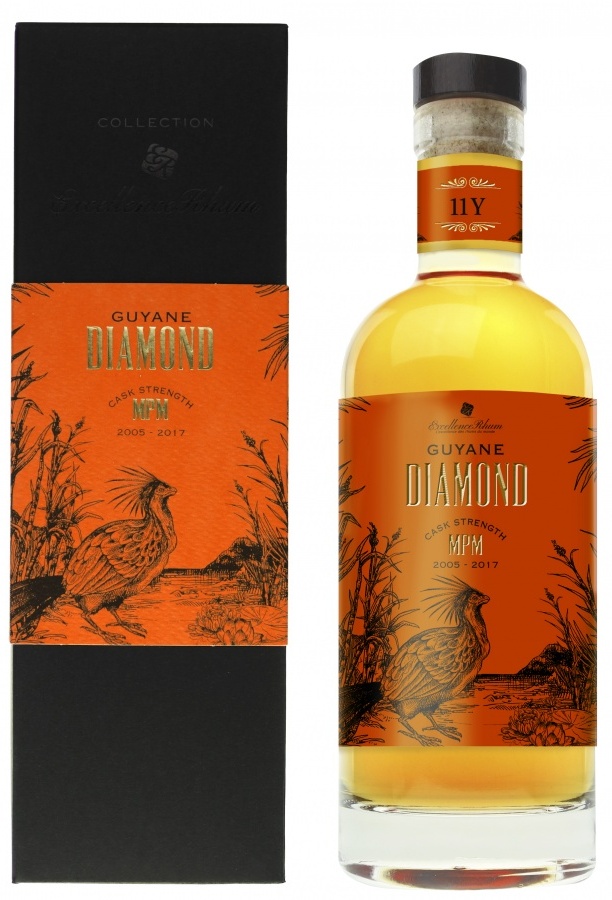
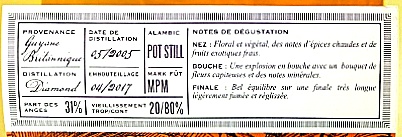

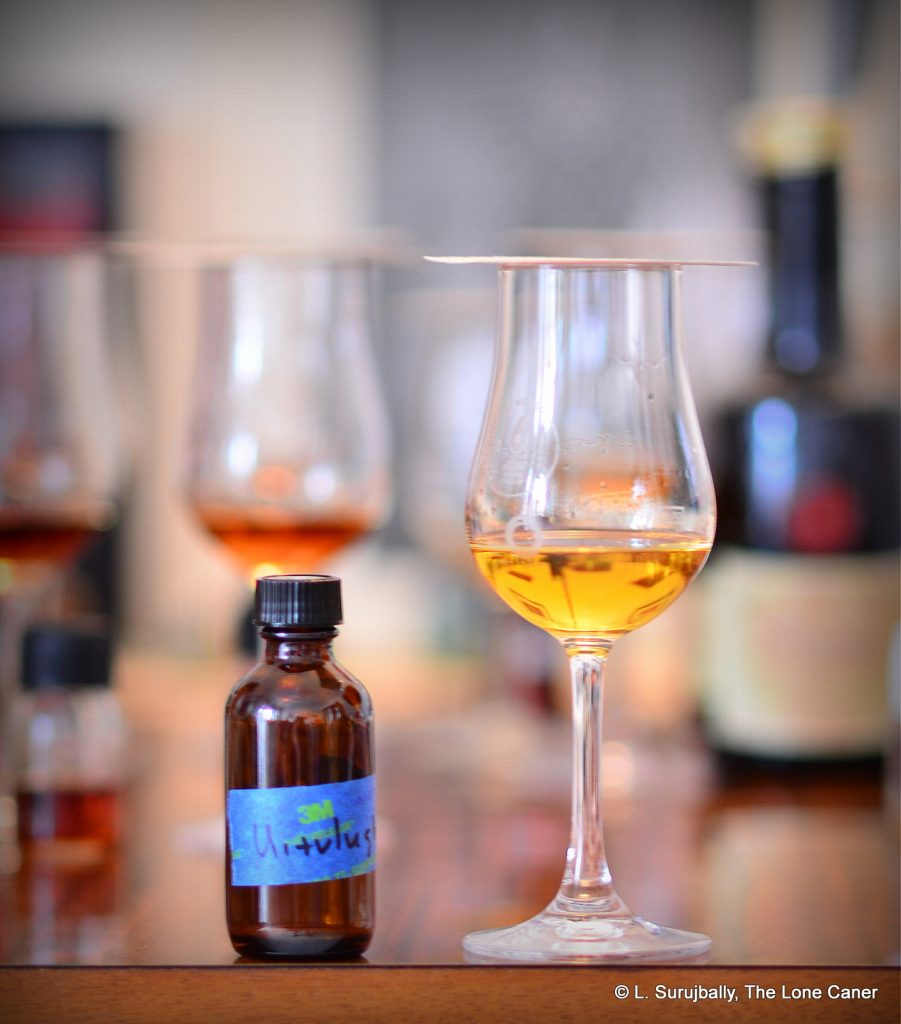

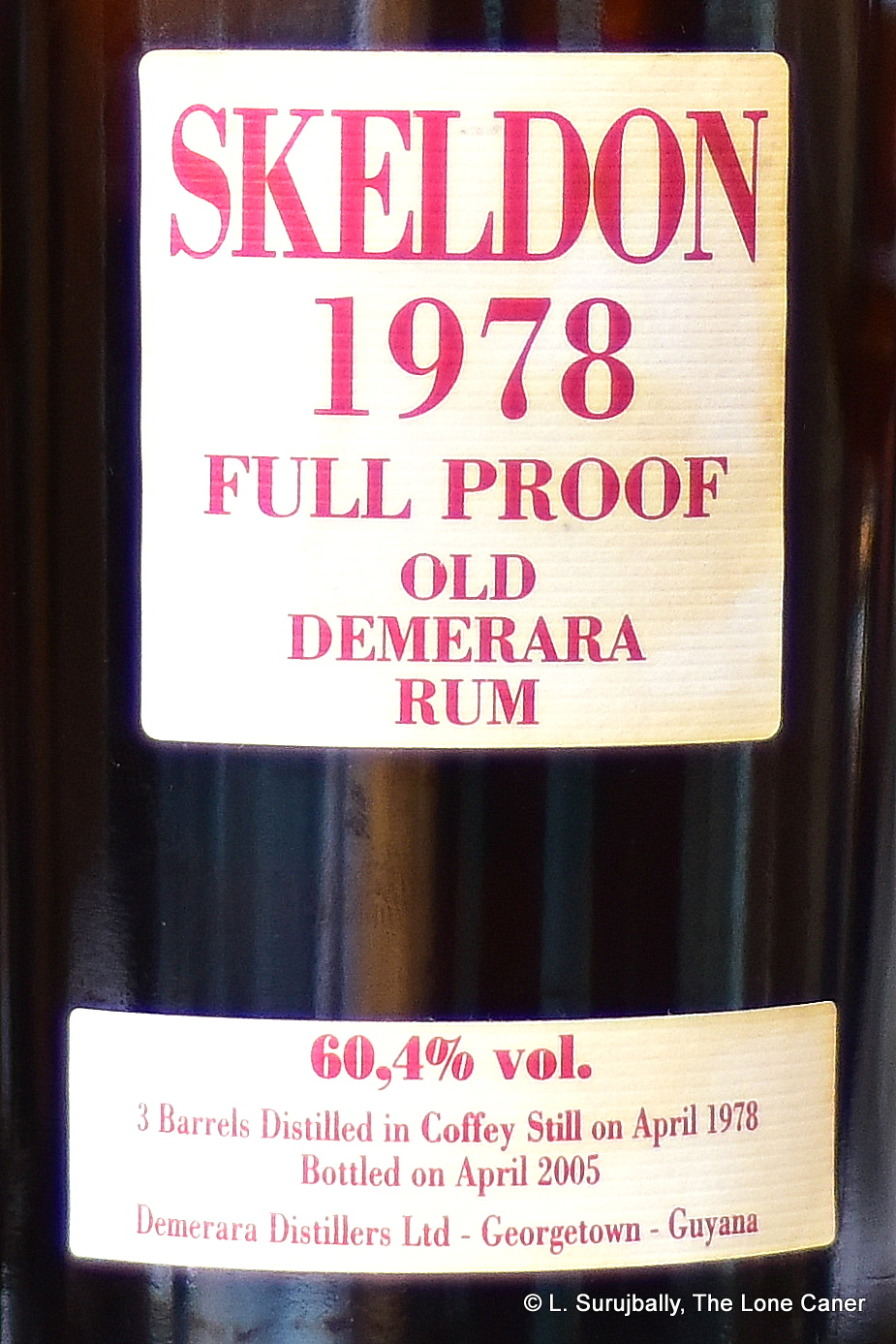 The history of the Skeldon 1978 bottling from a long-dismantled Savalle still is an odd one: the plantation is on the far eastern side of Guyana and the distillery has been shut down since 1960, though the original sugar factory’s remains continue to moulder away there, now replaced by a modern white elephant. It’s possible that the Savalle still which made it was taken elsewhere (Uitvlugt is the unconfirmed suspect) and this distillate hails from there rather than Skeldon — but certainly the “SWR” barrels ended up at Diamond, where Luca saw them gathering dust in the warehouse and convinced Yesu Persaud (the chairman of DDL at the time) to part with them. The 4-barrel 544-bottle outturn of the
The history of the Skeldon 1978 bottling from a long-dismantled Savalle still is an odd one: the plantation is on the far eastern side of Guyana and the distillery has been shut down since 1960, though the original sugar factory’s remains continue to moulder away there, now replaced by a modern white elephant. It’s possible that the Savalle still which made it was taken elsewhere (Uitvlugt is the unconfirmed suspect) and this distillate hails from there rather than Skeldon — but certainly the “SWR” barrels ended up at Diamond, where Luca saw them gathering dust in the warehouse and convinced Yesu Persaud (the chairman of DDL at the time) to part with them. The 4-barrel 544-bottle outturn of the 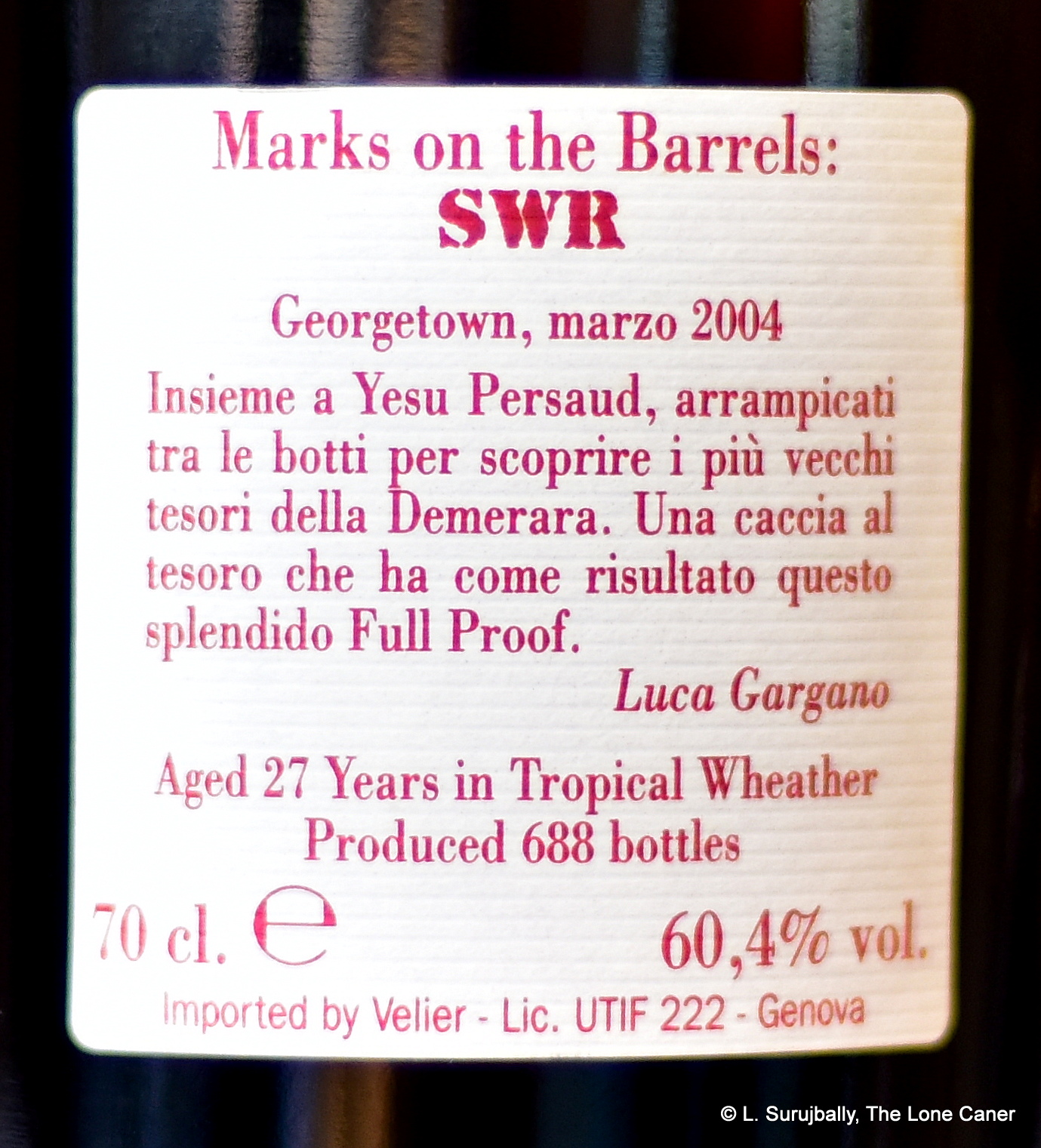 Although things at the Tasting were going faster than I was able to write (and listen), this was not a rum I wanted to be hurried with after waiting so long, and certainly it’s one with which to take one’s time. It unfolded gradually on the tongue, almost languorously and even at 60.4%, it was amazing how entirely under control it remained the entire time. Most of the tastes in the nose carried over, primarily anise, coffee and bitter chocolate, oranges, strong black tea, cumin, and that lentil soup / beef broth meatiness I remarked on earlier. But there were also more muted, subtler hints of papaya and fleshy fruits, aromatic tobacco, flambeed bananas and salty caramel. A rather dry note of over-roasted nuts came into play at the back end, a slight indeterminate bitterness (something like a manager who can never compliment your work without a closing criticism), but fortunately the muskier fruit and creamy notes ameliorated it for the most part. And while the finish was more a last bow on the stage than a true epilogue that added a few extra fillips of flavour, it was in no way disappointing, leaving me with a memory of coffee, nougat, salt caramel ice cream, fruits, raisins, licorice and light chocolate oranges.
Although things at the Tasting were going faster than I was able to write (and listen), this was not a rum I wanted to be hurried with after waiting so long, and certainly it’s one with which to take one’s time. It unfolded gradually on the tongue, almost languorously and even at 60.4%, it was amazing how entirely under control it remained the entire time. Most of the tastes in the nose carried over, primarily anise, coffee and bitter chocolate, oranges, strong black tea, cumin, and that lentil soup / beef broth meatiness I remarked on earlier. But there were also more muted, subtler hints of papaya and fleshy fruits, aromatic tobacco, flambeed bananas and salty caramel. A rather dry note of over-roasted nuts came into play at the back end, a slight indeterminate bitterness (something like a manager who can never compliment your work without a closing criticism), but fortunately the muskier fruit and creamy notes ameliorated it for the most part. And while the finish was more a last bow on the stage than a true epilogue that added a few extra fillips of flavour, it was in no way disappointing, leaving me with a memory of coffee, nougat, salt caramel ice cream, fruits, raisins, licorice and light chocolate oranges.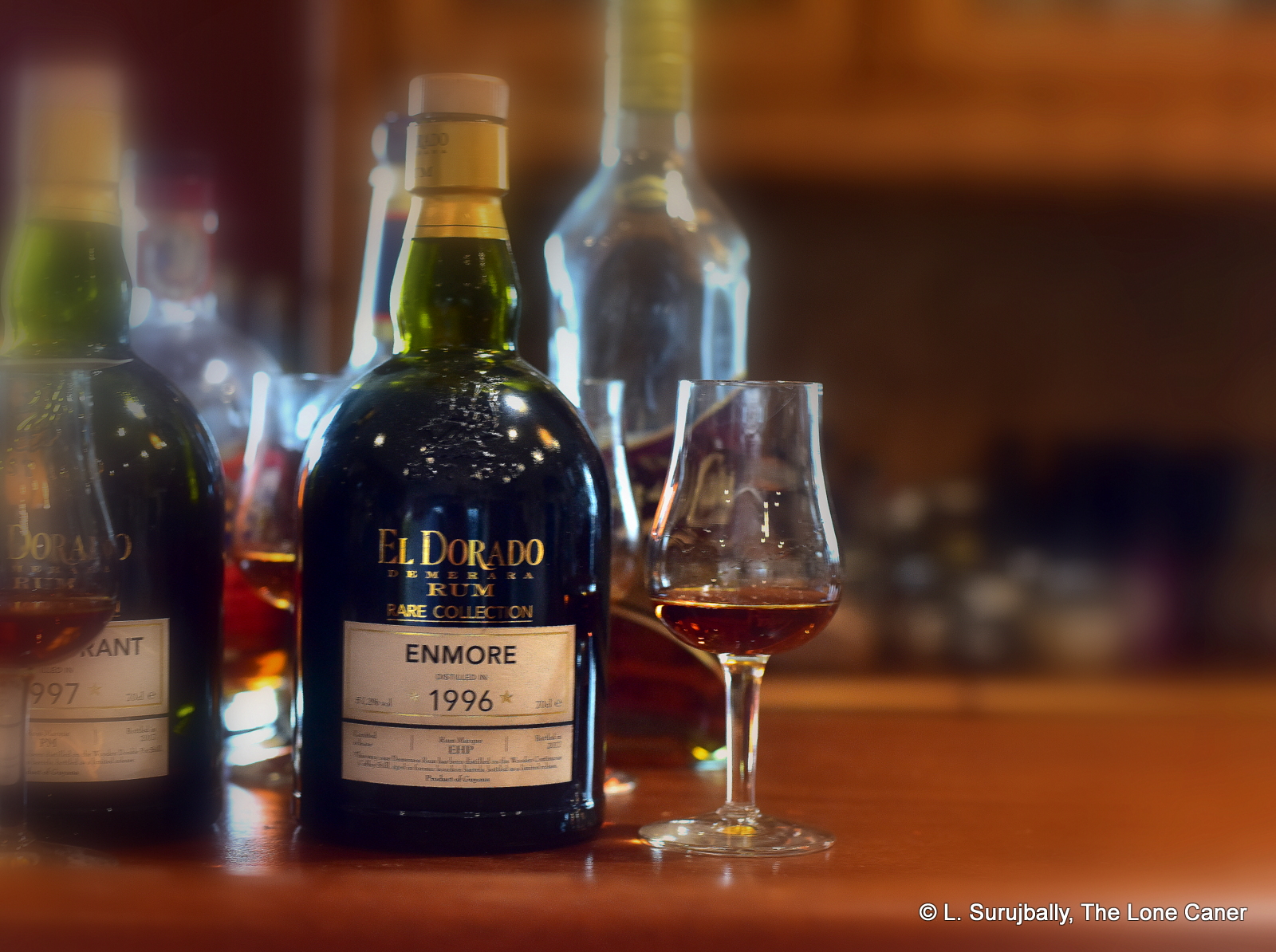

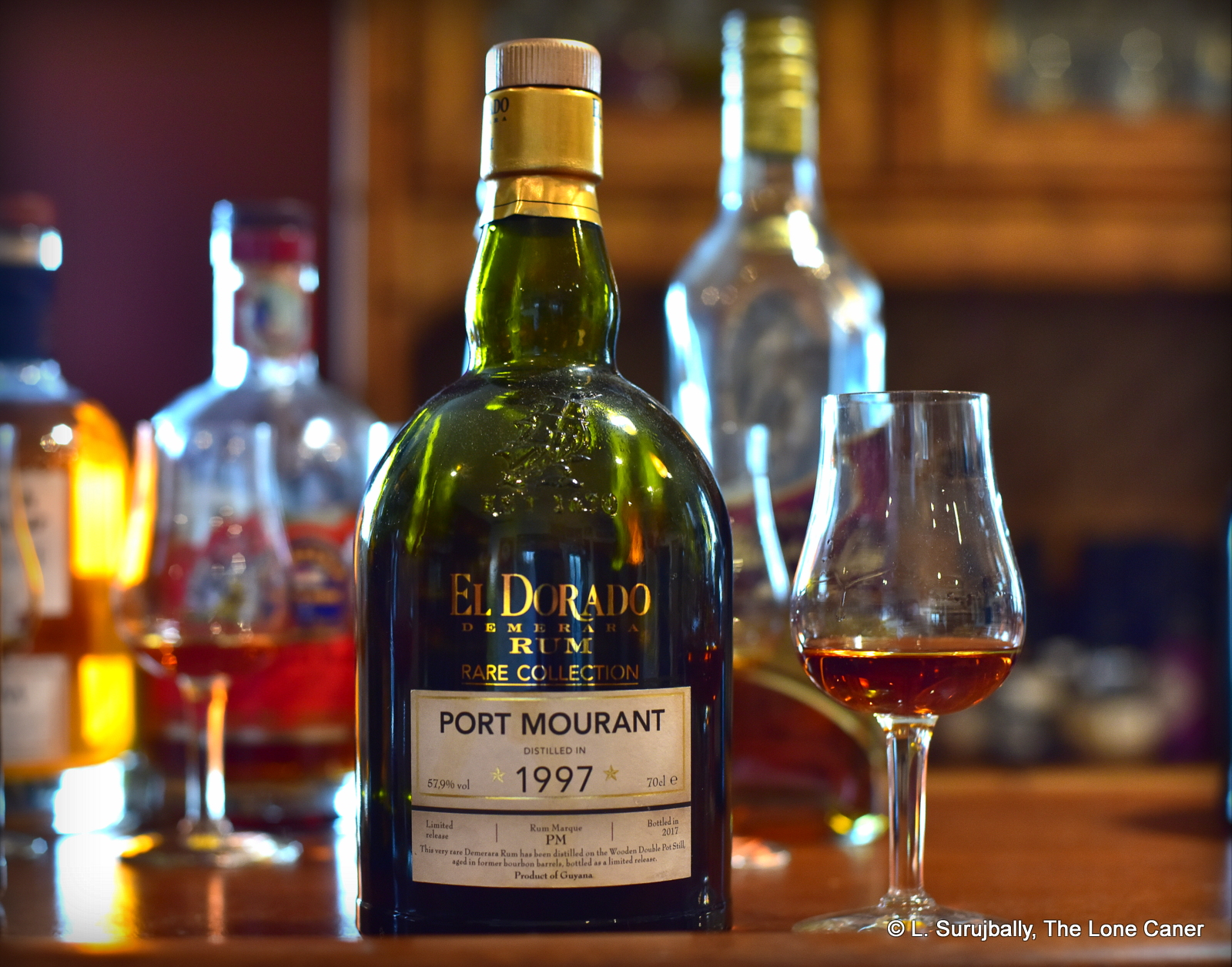

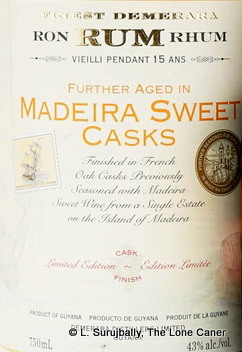 Nose – Leaving aside a slight sweetish note (which I suppose is to be expected, though still not entirely welcome), it noses relatively darker and richer and fruitier than just about all the others except the “Dry”…within the limits of its strength and mild adulteration. Peaches, raisins, cinnamon, cloves, caramel, peanut butter, cherries in syrup and candied oranges, even a little bitter chocolate. It’s all rather delicate, but quite pleasant.
Nose – Leaving aside a slight sweetish note (which I suppose is to be expected, though still not entirely welcome), it noses relatively darker and richer and fruitier than just about all the others except the “Dry”…within the limits of its strength and mild adulteration. Peaches, raisins, cinnamon, cloves, caramel, peanut butter, cherries in syrup and candied oranges, even a little bitter chocolate. It’s all rather delicate, but quite pleasant.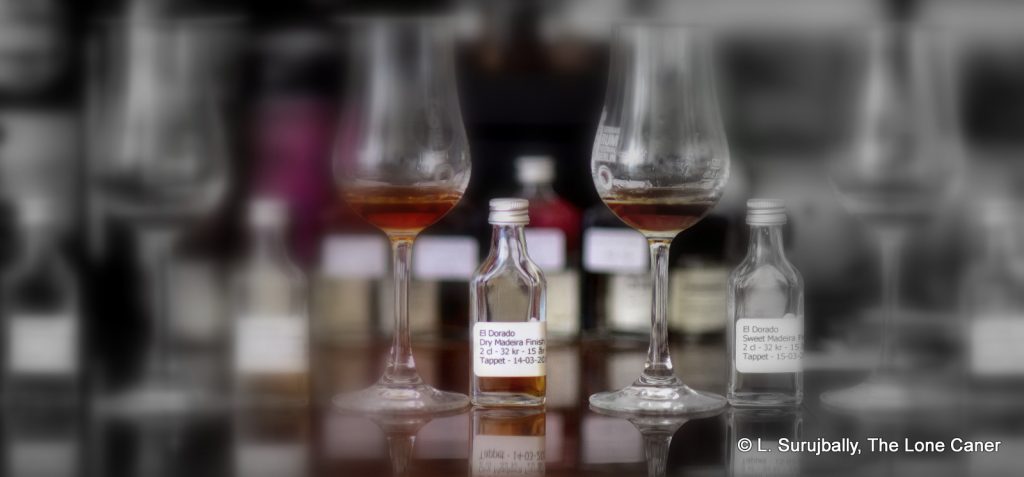

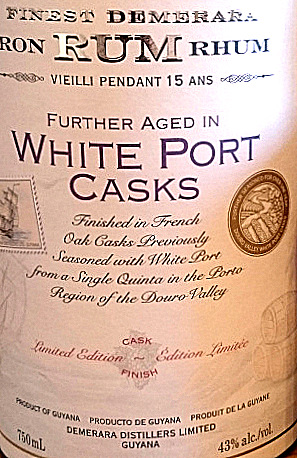 Nose – At first there didn’t seem to be much of anything there, it was so mild as to be lightly flavoured alcohol. But after some minutes it got into gear and revved up some, with a solid core of light brown sugar, molasses, salt caramel, some sweet soya. Not much deep fruitiness here, just light grapefruit, bananas and nuttiness, and sweet white chocolate.
Nose – At first there didn’t seem to be much of anything there, it was so mild as to be lightly flavoured alcohol. But after some minutes it got into gear and revved up some, with a solid core of light brown sugar, molasses, salt caramel, some sweet soya. Not much deep fruitiness here, just light grapefruit, bananas and nuttiness, and sweet white chocolate.
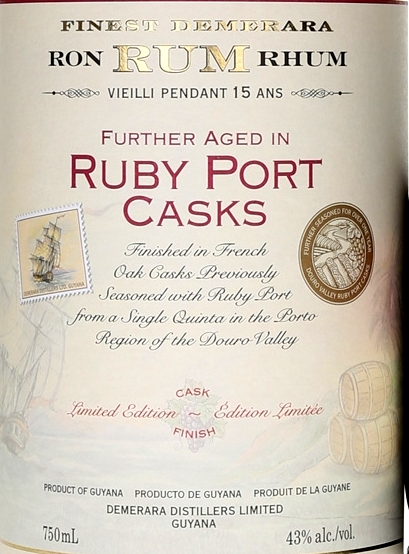 Nose – This has a light, sweet, almost delicate series of smells. There are acetones, flowers and some faint medicinal, varnish and glue aromas floating around (I liked those – they added something different), and initially the rum noses as surprisingly dry (another point I enjoyed). These then morph gradually into a more fruity melange – tinned cherries in syrup, ripe pears, pineapples, watermelons – while remaining quite crisp. It also hinted at salted caramel, crunchy peanut butter, breakfast spices and a little brine, and the balance among all these seemingly competing elements is handled really well.
Nose – This has a light, sweet, almost delicate series of smells. There are acetones, flowers and some faint medicinal, varnish and glue aromas floating around (I liked those – they added something different), and initially the rum noses as surprisingly dry (another point I enjoyed). These then morph gradually into a more fruity melange – tinned cherries in syrup, ripe pears, pineapples, watermelons – while remaining quite crisp. It also hinted at salted caramel, crunchy peanut butter, breakfast spices and a little brine, and the balance among all these seemingly competing elements is handled really well.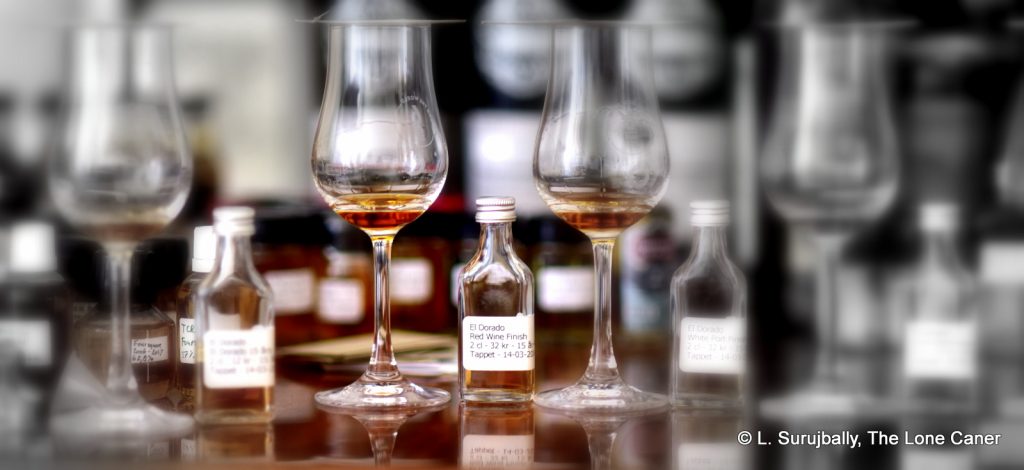
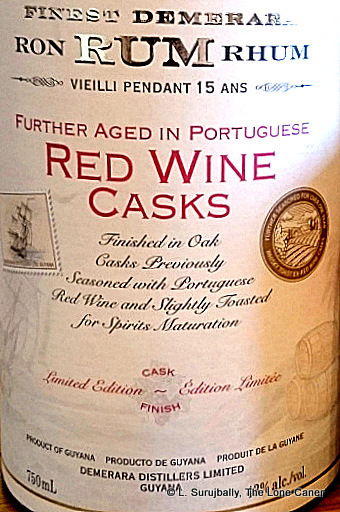 Nose – Somewhat dry and redolent of sawdust, accompanied by delicate flowers an acetones. Quite solid and lightly sweet, and deserves to be left to stand for a while, because after some minutes the molasses, caramel and light licorice notes characteristic of the line begin to make themselves felt, and are then in their turn dethroned by a deep fruitiness of ripe cherries, blackcurrants, plums, raisins and black grapes almost ready to spoil. In the background there’s some leather and citrus, neither strong enough to make any kind of serious impression.
Nose – Somewhat dry and redolent of sawdust, accompanied by delicate flowers an acetones. Quite solid and lightly sweet, and deserves to be left to stand for a while, because after some minutes the molasses, caramel and light licorice notes characteristic of the line begin to make themselves felt, and are then in their turn dethroned by a deep fruitiness of ripe cherries, blackcurrants, plums, raisins and black grapes almost ready to spoil. In the background there’s some leather and citrus, neither strong enough to make any kind of serious impression.
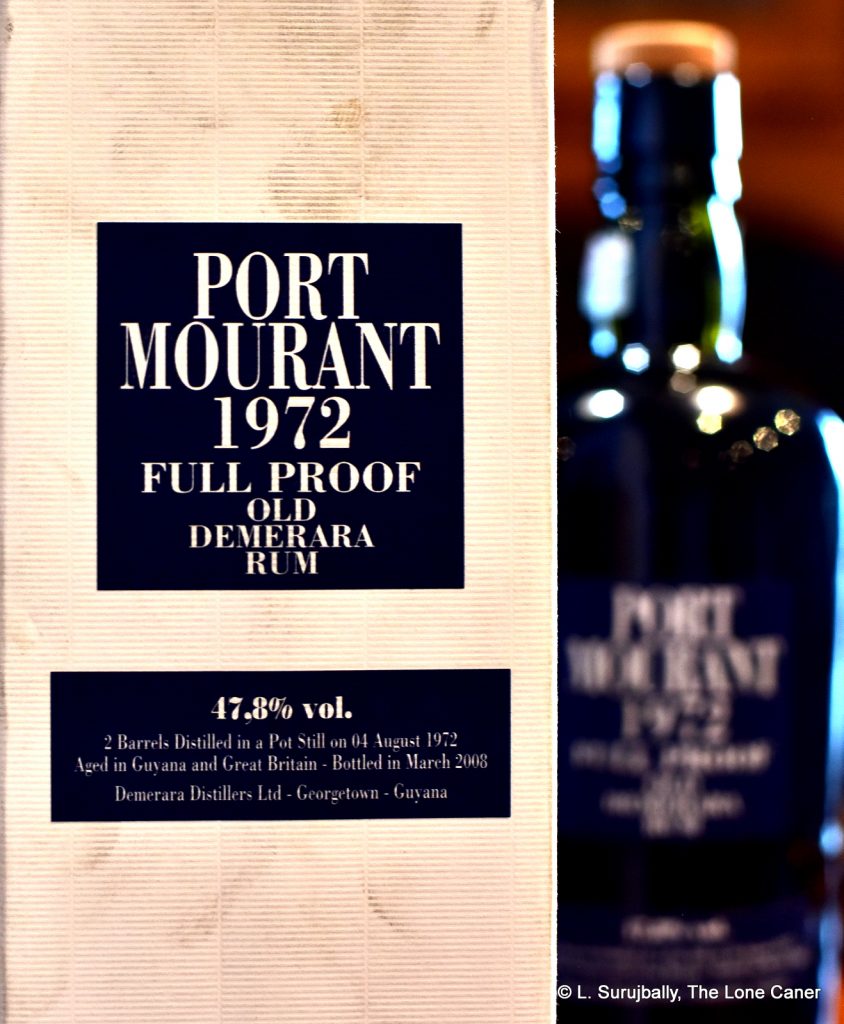 The nose made an immediate and emphatic response: “Here’s how.” I had exasperatedly grumbled
The nose made an immediate and emphatic response: “Here’s how.” I had exasperatedly grumbled 
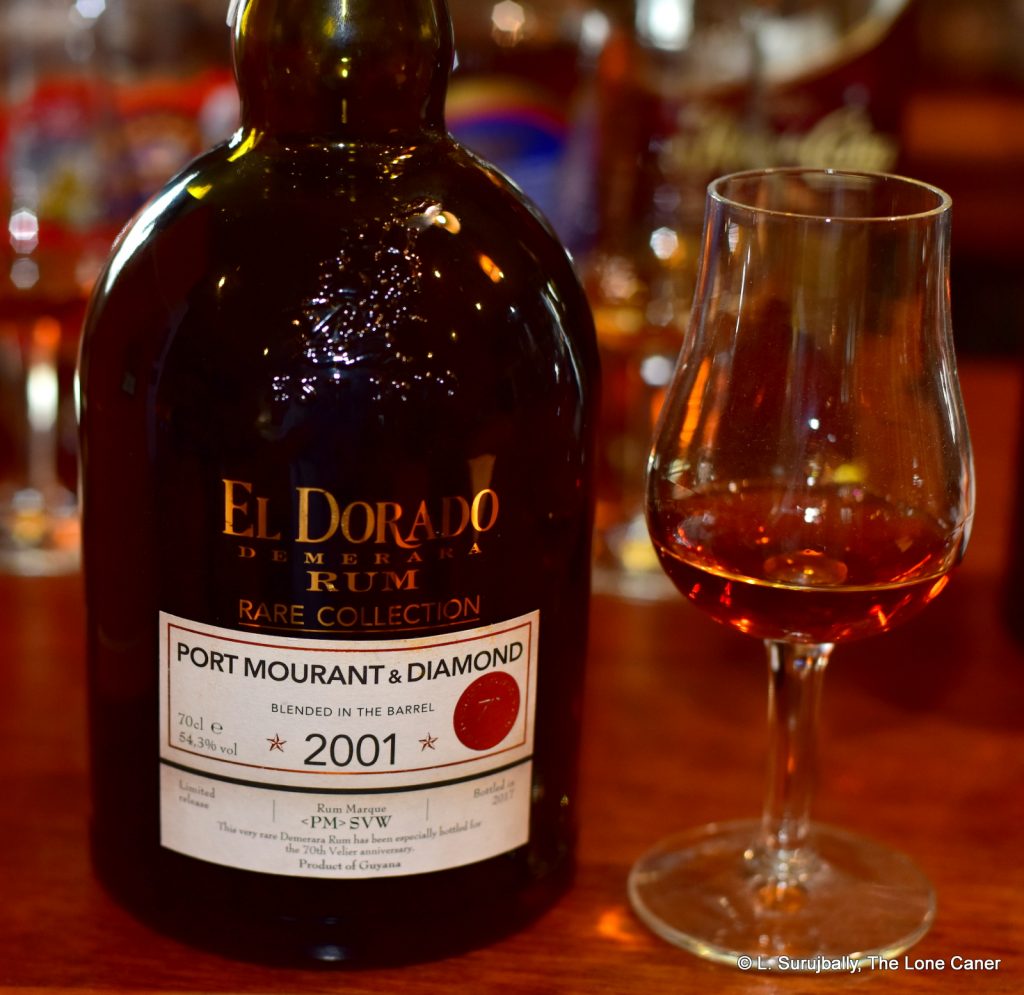
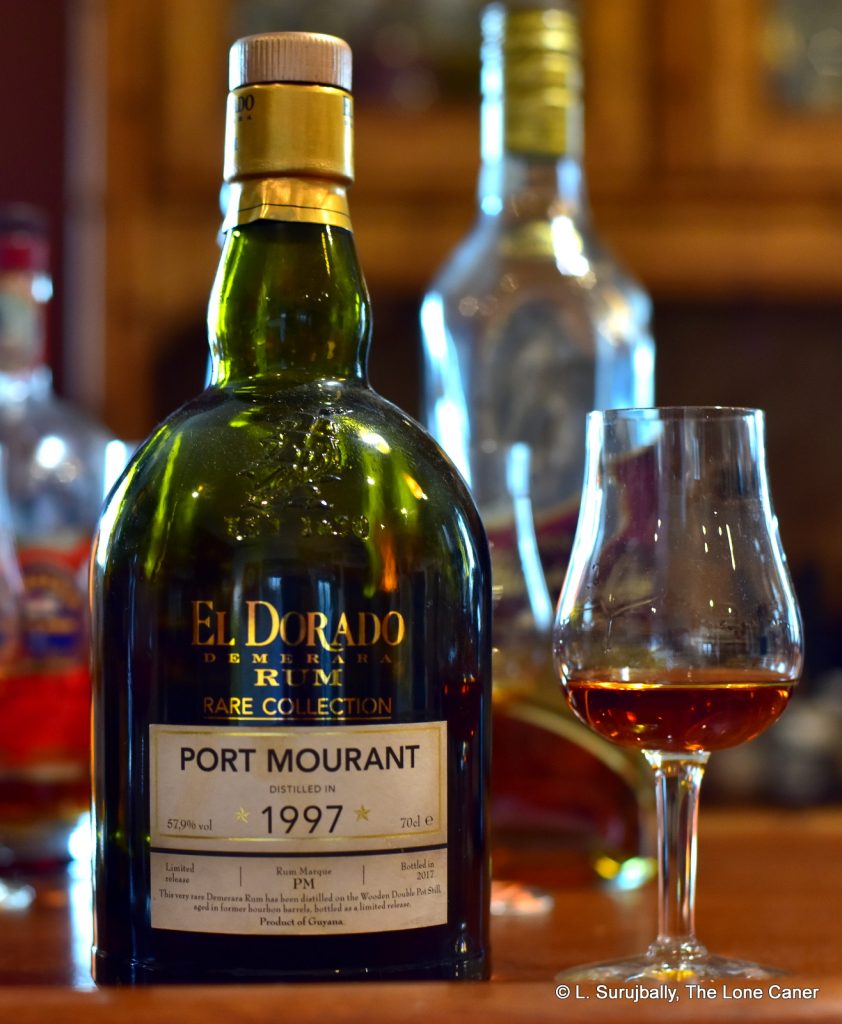
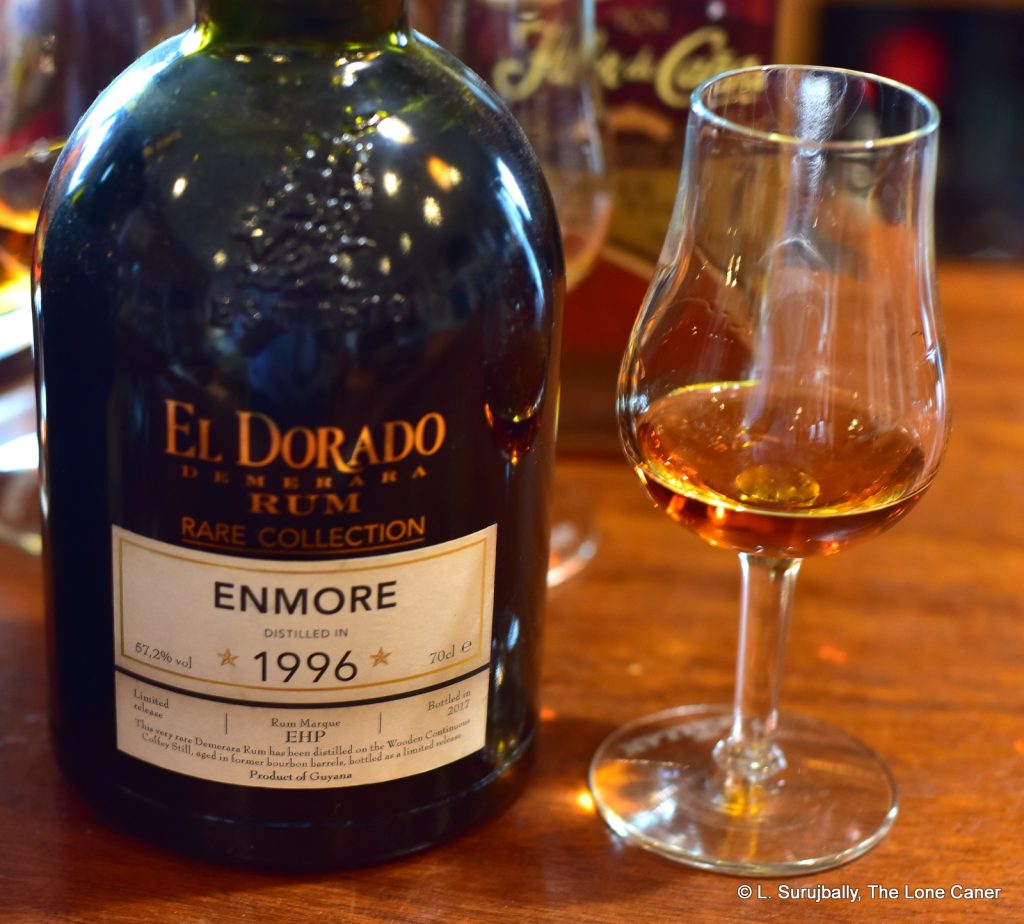
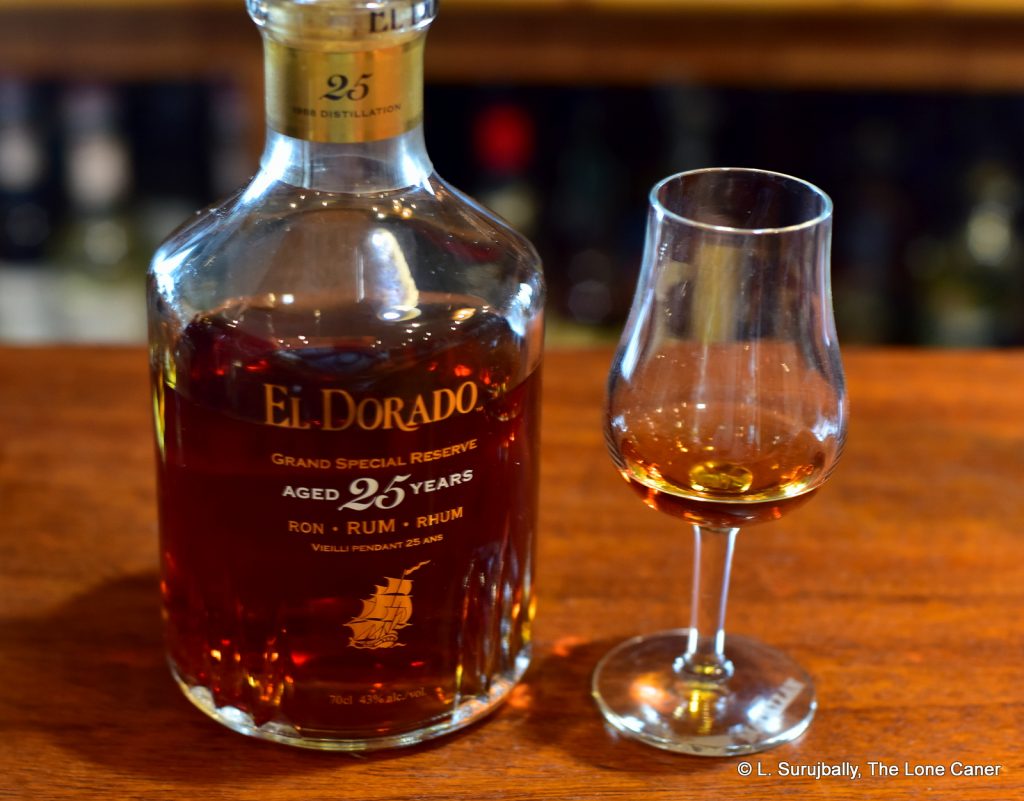
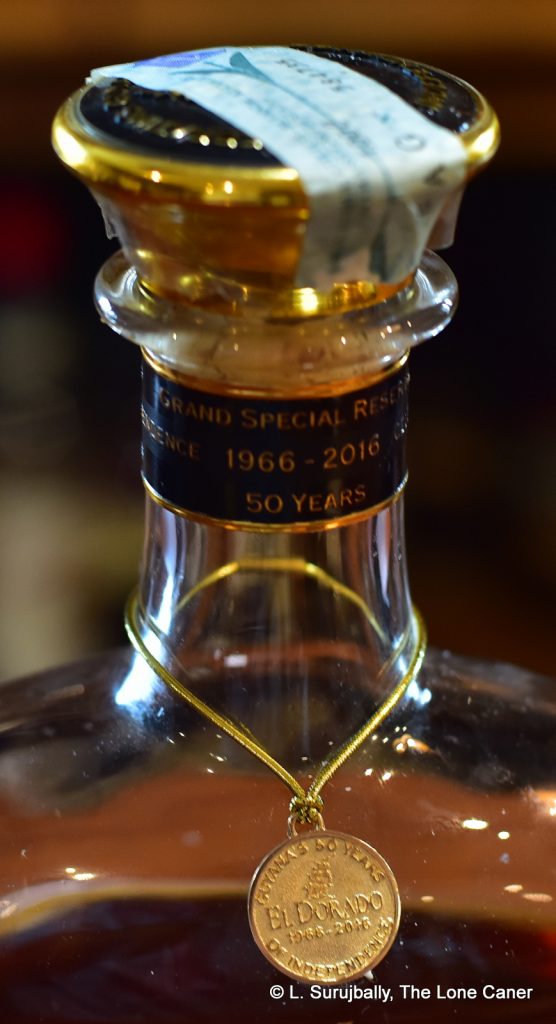
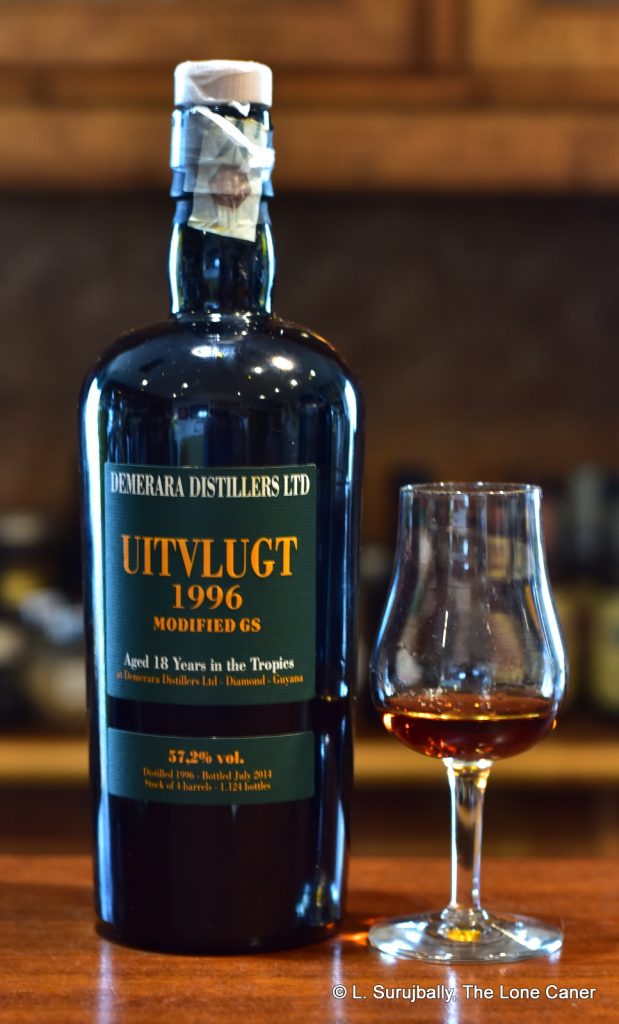
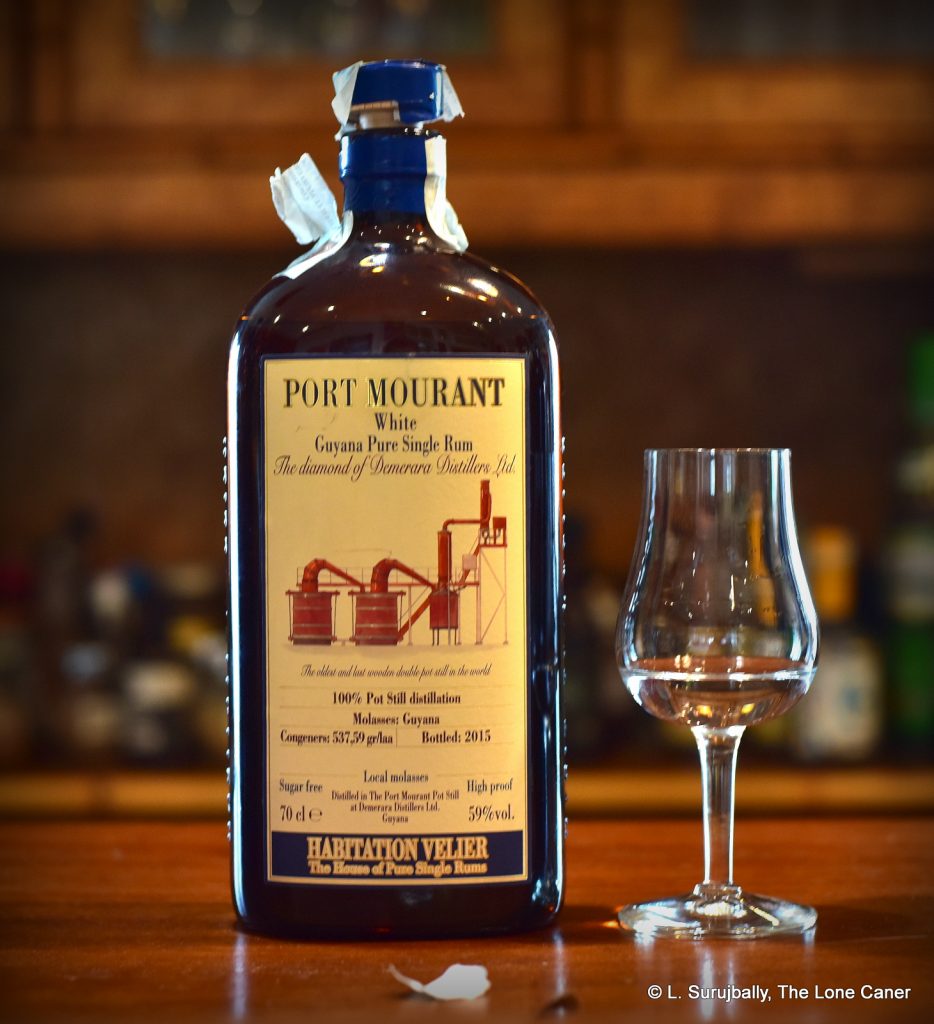
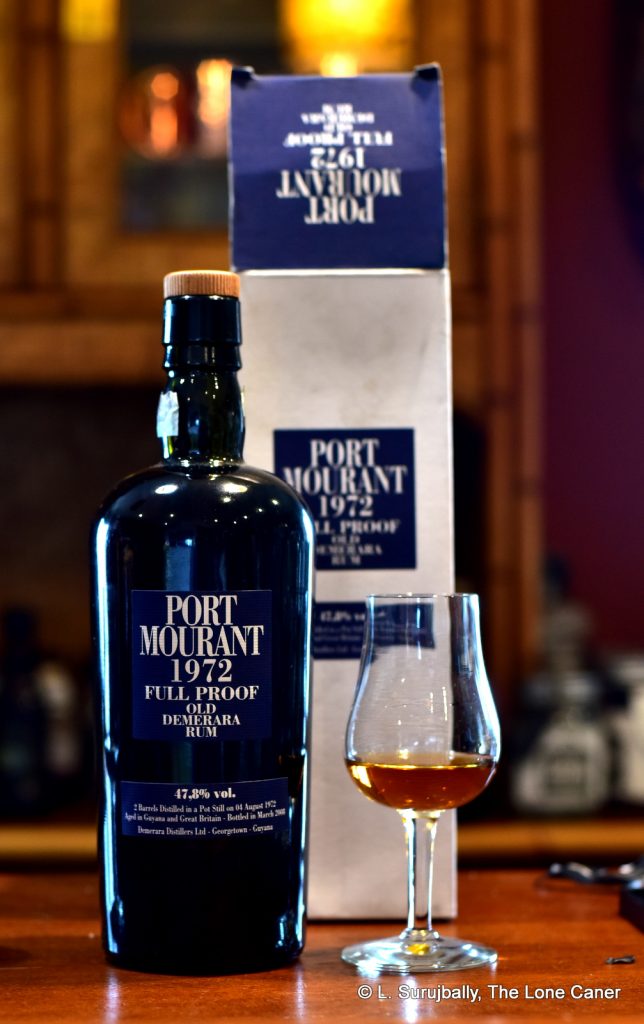
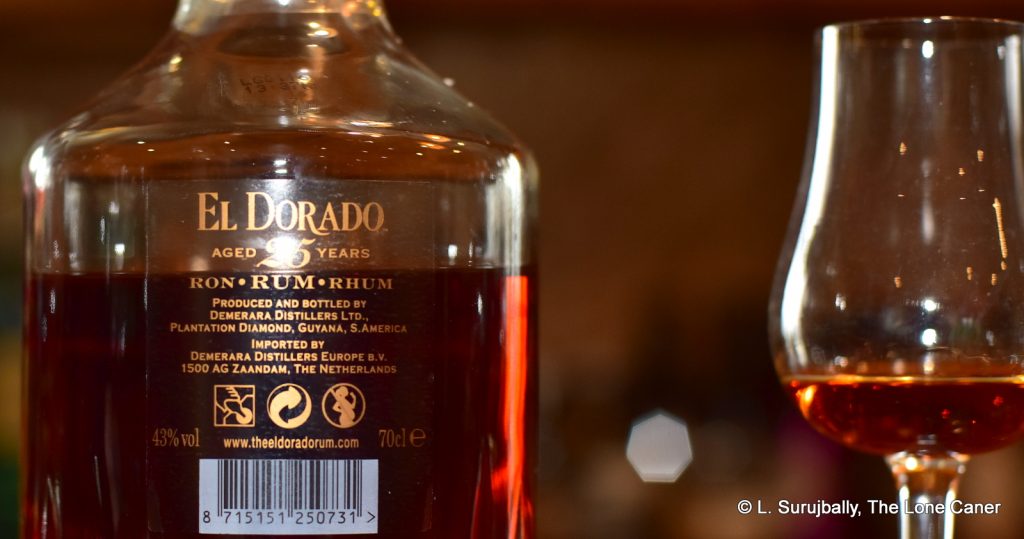
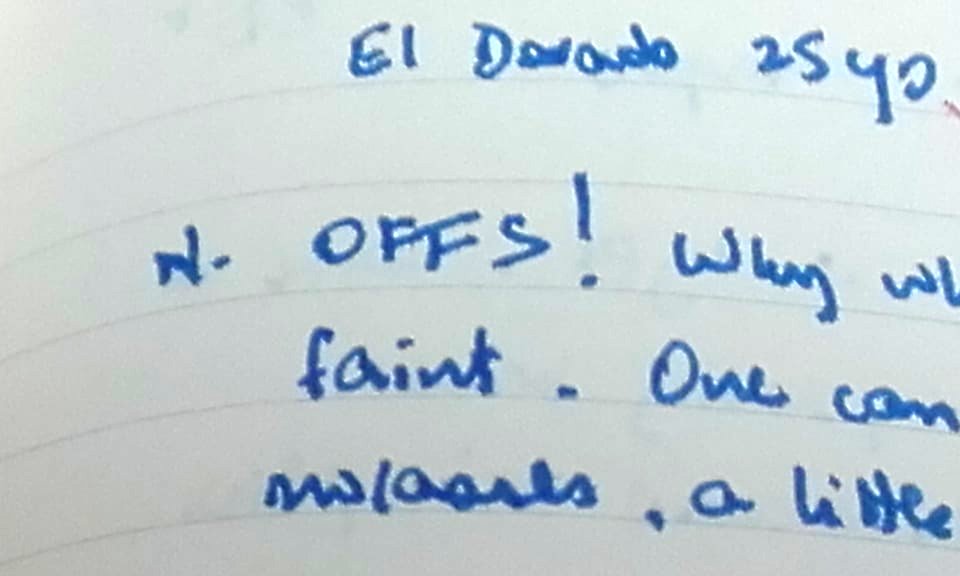

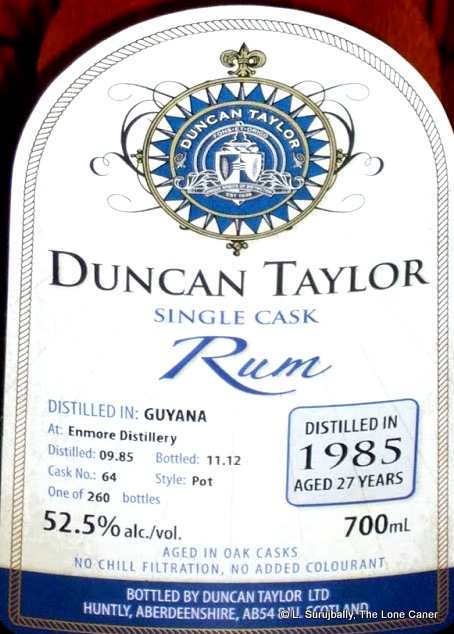 Thinness of the nose aside, the palate took something of a ninety degree left turn. It felt thicker, richer, with the glue and furniture polish notes receding, yet what emerged was a rum that seemed over-oaked, and very dry, very crisp. What fruits there were – and there were some, mostly raisins, pears, unripe apples and green mangoes – were of the mouth puckering kind, quite tart, accompanied by orange peel, nutmeg, cardboard or drywall, and something that reminded me of the dustiness of a drought-stricken backyard. The strength was fine for what it was – not low enough to make it a mild crowd-pleaser, not so strong as to make it an assault on the tongue, so on that level it succeeded just fine. The finish gave up more of those tart fruity sensations, oak notes, some pepper and cooking herbs (thyme and parsley)…yet overall, it somehow failed to cohere really well, and the whole experience was deflated by its relative lack of voluptuousness that either some more ageing or some time in tropical climes might have ameliorated.
Thinness of the nose aside, the palate took something of a ninety degree left turn. It felt thicker, richer, with the glue and furniture polish notes receding, yet what emerged was a rum that seemed over-oaked, and very dry, very crisp. What fruits there were – and there were some, mostly raisins, pears, unripe apples and green mangoes – were of the mouth puckering kind, quite tart, accompanied by orange peel, nutmeg, cardboard or drywall, and something that reminded me of the dustiness of a drought-stricken backyard. The strength was fine for what it was – not low enough to make it a mild crowd-pleaser, not so strong as to make it an assault on the tongue, so on that level it succeeded just fine. The finish gave up more of those tart fruity sensations, oak notes, some pepper and cooking herbs (thyme and parsley)…yet overall, it somehow failed to cohere really well, and the whole experience was deflated by its relative lack of voluptuousness that either some more ageing or some time in tropical climes might have ameliorated. Unaged rums take some getting used to because they are raw from the barrel and therefore the rounding out and mellowing of the profile which ageing imparts, is not a factor. That means all the jagged edges, dirt, warts and everything, remain. Here that was evident after a single sip: it was sharp and fierce, with the licorice notes subsumed into dirtier flavours of salt beef, brine, olives and garlic pork (seriously!). It took some time for other aspects to come forward – gherkins, leather, flowers and varnish – and even then it was not until another half hour had elapsed that crisper acidic notes like unripe apples and thai lime leaves (I get those to buy in the local market), were noticeable. Plus some vanilla – where on earth did that come from? It all led to a long, duty, dry finish that provided yet more: sweet, sugary, sweet-and-salt soy sauce in a clear soup. Damn but this was a heady, complex piece of work. I liked it a lot, really.
Unaged rums take some getting used to because they are raw from the barrel and therefore the rounding out and mellowing of the profile which ageing imparts, is not a factor. That means all the jagged edges, dirt, warts and everything, remain. Here that was evident after a single sip: it was sharp and fierce, with the licorice notes subsumed into dirtier flavours of salt beef, brine, olives and garlic pork (seriously!). It took some time for other aspects to come forward – gherkins, leather, flowers and varnish – and even then it was not until another half hour had elapsed that crisper acidic notes like unripe apples and thai lime leaves (I get those to buy in the local market), were noticeable. Plus some vanilla – where on earth did that come from? It all led to a long, duty, dry finish that provided yet more: sweet, sugary, sweet-and-salt soy sauce in a clear soup. Damn but this was a heady, complex piece of work. I liked it a lot, really.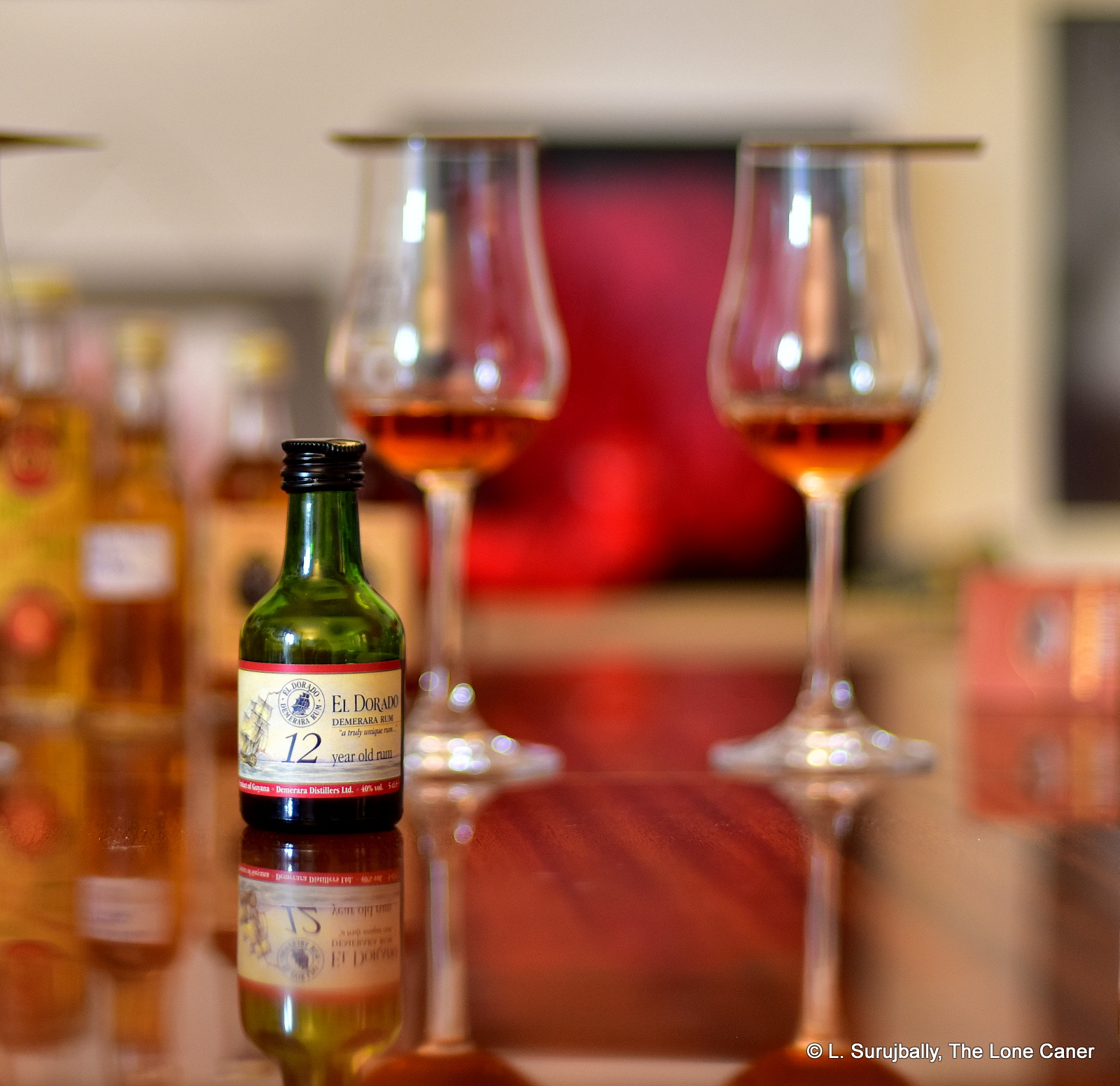
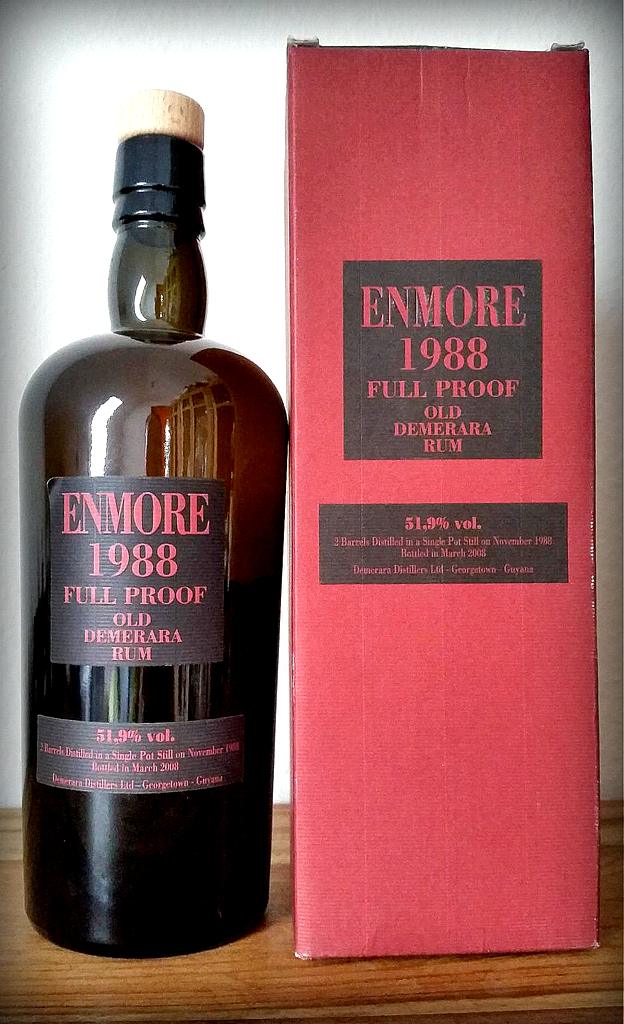

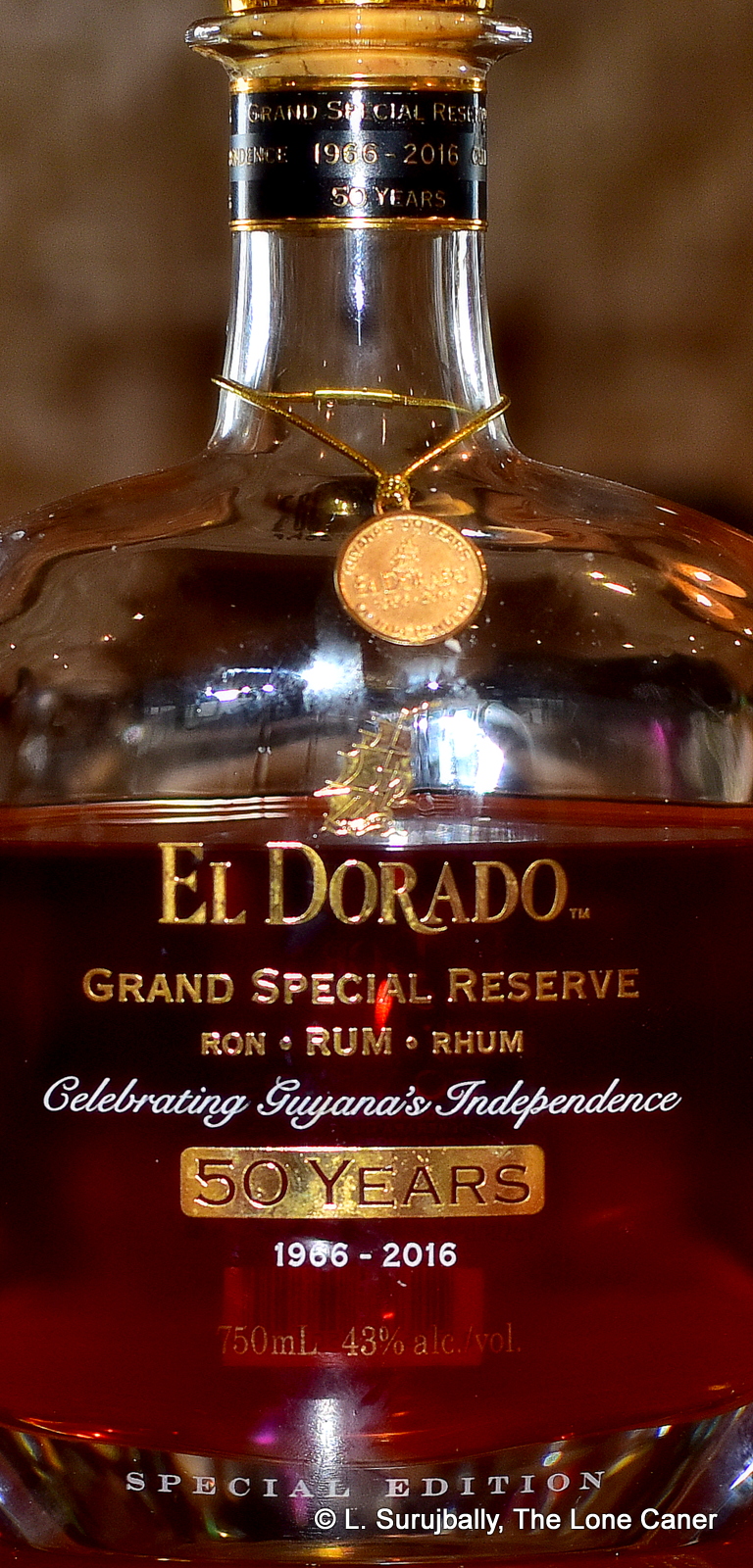 Which brings us to the El Dorado 50th Anniversary offering, with 600 produced bottles selling for a muscular US$3500 or so (each), and bottled at a less beefy 43%, meant to celebrate Guyana’s 50th anniversary of independence in 2016, just as the Appleton 50 did a few years earlier. It is not, as some websites state, a fifty year old rum (the bottle itself notes “50 years” in bold writing which doesn’t help) — by strict definition it is a 33 year old. The Whisky Exchange, which I have no reason to doubt, notes it as being a blend of rums: 65% from 1966, 25% between 1966 and 1976 and another 10% from 1983….so the idea that each of these aged components is from a specific still is likely to be a reasonable assumption (I’ve cobbled together various sources on the parts of the blend in “other notes” below).
Which brings us to the El Dorado 50th Anniversary offering, with 600 produced bottles selling for a muscular US$3500 or so (each), and bottled at a less beefy 43%, meant to celebrate Guyana’s 50th anniversary of independence in 2016, just as the Appleton 50 did a few years earlier. It is not, as some websites state, a fifty year old rum (the bottle itself notes “50 years” in bold writing which doesn’t help) — by strict definition it is a 33 year old. The Whisky Exchange, which I have no reason to doubt, notes it as being a blend of rums: 65% from 1966, 25% between 1966 and 1976 and another 10% from 1983….so the idea that each of these aged components is from a specific still is likely to be a reasonable assumption (I’ve cobbled together various sources on the parts of the blend in “other notes” below).

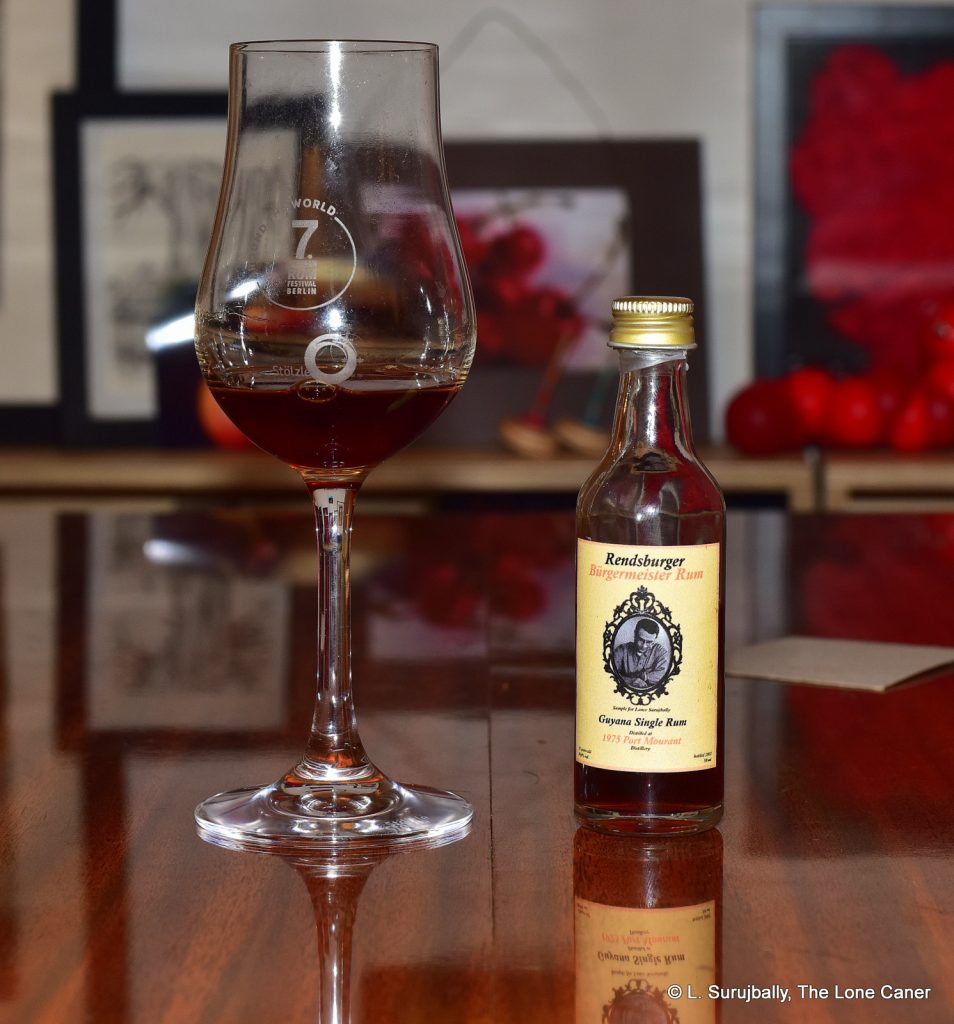 As for the palate, man, I’m in heaven, because I just found another 1975 to add to the pantheon. That same growling, thick richness of the nose segued to the tongue with no pause, no hesitation and no detours. The strength was near perfect – it gave strength without sharpness, allowing all the flavours to march solidly across the stage and present themselves one after the other: licorice, vanilla, caramel, bags of fruits, a little saltiness, biscuits and cereal. The whole thing was warm and thick with dark flavours that never seemed to want to stop showing off and even the oak, which at first I thought started to take on an unhealthy dominance after some minutes (I was actually writing “Mozart just exited the scene and is replaced by Salieri!” before crossing it out), retreated into the background, chilled out, and was (to my relief) content to be a part of the troupe rather than a scene stealing hog. The exemplary and traditional Port Mourant profile finished long, slow, voluptuously and with chocolate, coffee grounds, some oak, vanilla, raisins and anise, and overall, my take was it was simply one of the Grand Old Men of the plantation and the still.
As for the palate, man, I’m in heaven, because I just found another 1975 to add to the pantheon. That same growling, thick richness of the nose segued to the tongue with no pause, no hesitation and no detours. The strength was near perfect – it gave strength without sharpness, allowing all the flavours to march solidly across the stage and present themselves one after the other: licorice, vanilla, caramel, bags of fruits, a little saltiness, biscuits and cereal. The whole thing was warm and thick with dark flavours that never seemed to want to stop showing off and even the oak, which at first I thought started to take on an unhealthy dominance after some minutes (I was actually writing “Mozart just exited the scene and is replaced by Salieri!” before crossing it out), retreated into the background, chilled out, and was (to my relief) content to be a part of the troupe rather than a scene stealing hog. The exemplary and traditional Port Mourant profile finished long, slow, voluptuously and with chocolate, coffee grounds, some oak, vanilla, raisins and anise, and overall, my take was it was simply one of the Grand Old Men of the plantation and the still. 